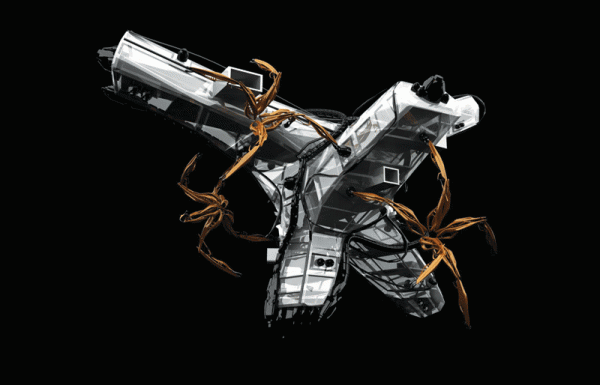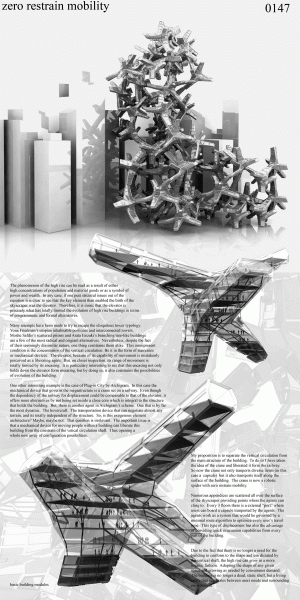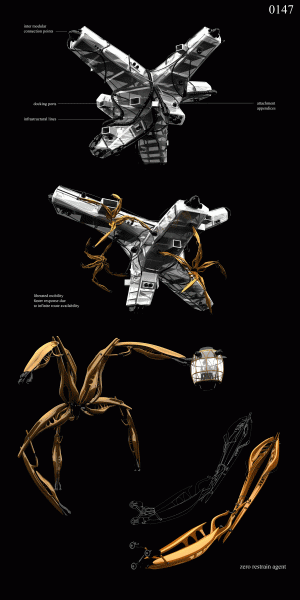Special Mention
2007 Skyscraper Competition
Eduardo McIntosh
United Kingdom
Alternatives to vertical circulation strategies within high-rises
The phenomenon of the “high-rise” can be read as a result of either high concentration of population or as a symbol of power and wealth. In any case, if we put structural issues out of the equation it is clear that the key element that enabled the birth of the skyscraper was the invention of the elevator. Therefore, it is ironic that the elevator is precisely what has totally limited the evolution of high-rise buildings in terms of programmatic and formal alternatives.
Many attempts have been made to try to escape the ubiquitous tower typology. Yona Friedman’s utopian inhabitable porticoes and interconnected towers, Moshe Safdie’s scattered prisms, and Arata Isozaki’s branching tree-like buildings, are a few of the most radical and original alternatives. Nevertheless, despite their seemingly dissimilar nature, they have one common omnipresent condition, the concentration of the vertical circulation, be it in the form of staircases or mechanical devices. The elevator, because of its capability of movement, is mistakenly perceived as a liberating agent. On closer inspection, its range of movement is totally limited by its encasing. It is particularly interesting to see that this encasing not only holds down the elevator form mutating, but by doing so, also constrains the possibilities of evolution of the building. One other interesting example is the case of Plug-in City by Archigram, where the mechanical device that governs the mega structure is a crane set on a railway.
The hovercraft is a transportation device that can negotiate almost any terrain and that is totally independent of the structure. Is this exogenous element a form of “architecture”? That question is irrelevant. The important issue is that a mechanical device for moving people within a building could liberate this building from the constraints imposed by the vertical circulation shaft. My proposition is to separate the vertical circulation from the main structure of the building. To do so, I plan to take the idea of the crane and liberate it form the railway by grouping several cranes into an autonomous free moving device that could roam along the exterior of the building by clinging to appendices scattered on its surface while carrying users or items inside capsules. The agents would work as a system that would be governed by a minimal route algorithm (e.g. ant colony optimization algorithm) to improve every users travel time. Power would be provided to these agents through the appendices on the buildings surface. This type of displacement also has the advantage of providing quick evacuation capabilities from every part of the building.
















